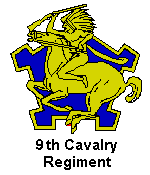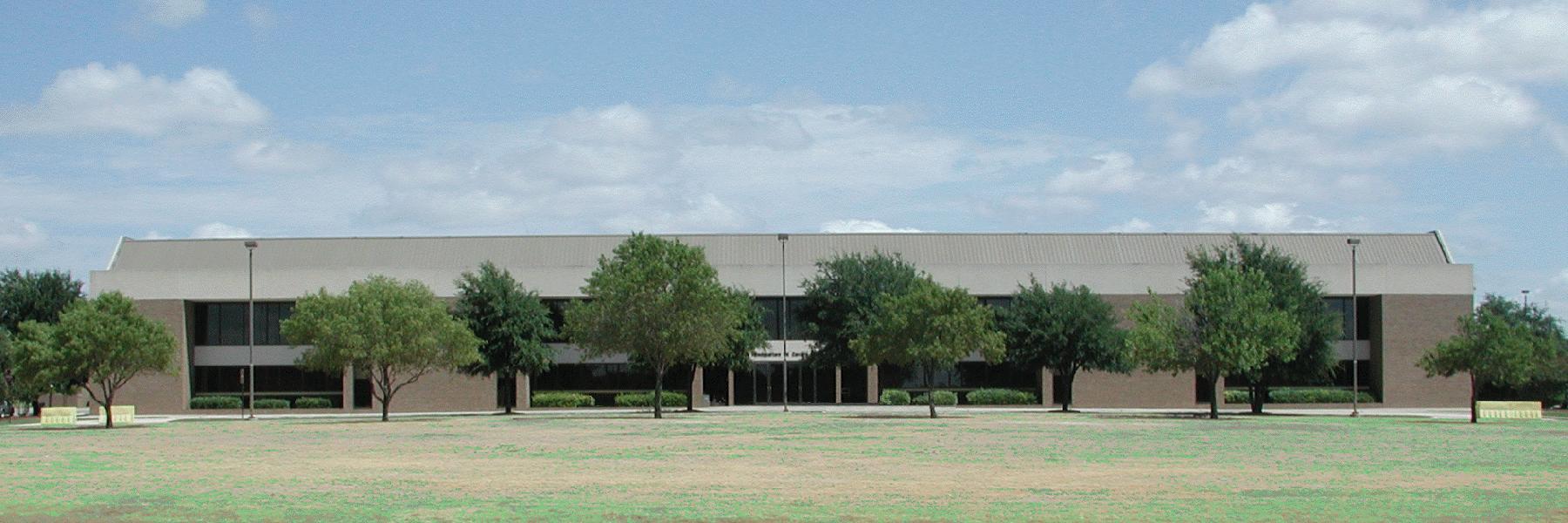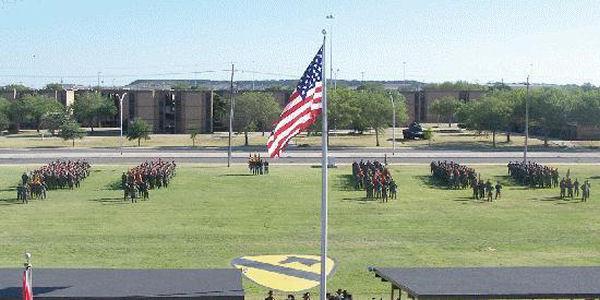

9th Cavalry Regiment
In Readiness
"We Can, We Will"

![]()



![]()
|
|---|
![]() TRICAP, an acronym for TRIple-CAPability, was derived from combining the
ground (mechanized infantry or armor) capability, airmobile infantry and air
cavalry or attack helicopter forces. TRICAP I was held at Fort Hood, Texas
beginning in February 1972. On 28 February 1972, the 4th Squadron, 9th Cavalry
was reactivated to join in TRICAP evaluations. The purpose of TRICAP I was to
investigate the effectiveness and operational employment of the TRICAP concept
at battalion and company levels when conducting tactical operations in a 1979
European mid-intensity warfare environment. The exercise consisted of six
phases; movement to contact, defense and delay, exploitation, elimination of
penetration, rear area security and night elimination of penetration in an
adjacent area. On 13 September 1972, the 4th Squadron, 9th Cavalry was
inactivated at Fort Hood, Texas.
TRICAP, an acronym for TRIple-CAPability, was derived from combining the
ground (mechanized infantry or armor) capability, airmobile infantry and air
cavalry or attack helicopter forces. TRICAP I was held at Fort Hood, Texas
beginning in February 1972. On 28 February 1972, the 4th Squadron, 9th Cavalry
was reactivated to join in TRICAP evaluations. The purpose of TRICAP I was to
investigate the effectiveness and operational employment of the TRICAP concept
at battalion and company levels when conducting tactical operations in a 1979
European mid-intensity warfare environment. The exercise consisted of six
phases; movement to contact, defense and delay, exploitation, elimination of
penetration, rear area security and night elimination of penetration in an
adjacent area. On 13 September 1972, the 4th Squadron, 9th Cavalry was
inactivated at Fort Hood, Texas.
![]() On 21 February 1975, the end of TRICAP evaluations, the mission of airmobile
anti-armor warfare was transferred to the 6th Cavalry Brigade (Air Combat)
co-located at Fort Hood, Texas and the 1st Cavalry Division was reorganized
and redesignated to become the newest Armored Division in the Army,
essentially the battle configuration it retains today. On 21 July 1975, as
part of the divisional restructuring, the 4th Squadron, 9th Cavalry was
relieved from the 1st Cavalry Division and assigned to the 6th Cavalry
Brigade.
On 21 February 1975, the end of TRICAP evaluations, the mission of airmobile
anti-armor warfare was transferred to the 6th Cavalry Brigade (Air Combat)
co-located at Fort Hood, Texas and the 1st Cavalry Division was reorganized
and redesignated to become the newest Armored Division in the Army,
essentially the battle configuration it retains today. On 21 July 1975, as
part of the divisional restructuring, the 4th Squadron, 9th Cavalry was
relieved from the 1st Cavalry Division and assigned to the 6th Cavalry
Brigade.
 |
|---|
| 1st Cavalry Division Headquarters - 1980 |
![]() In September 1982, the division's first National Training Center (NTC)
rotation at Fort Irwin, located in the High Mojave Desert of California,
kicked off a long on-going series of tough, realistic desert battles which
enables the division to stay on the leading edge of warfare technology of
today. The first units to attend were the 2nd Battalion, 7th Cavalry and 3rd
Battalion, 10th Cavalry of the 2nd Brigade. The Division now conducts three
NTC rotations per year.
In September 1982, the division's first National Training Center (NTC)
rotation at Fort Irwin, located in the High Mojave Desert of California,
kicked off a long on-going series of tough, realistic desert battles which
enables the division to stay on the leading edge of warfare technology of
today. The first units to attend were the 2nd Battalion, 7th Cavalry and 3rd
Battalion, 10th Cavalry of the 2nd Brigade. The Division now conducts three
NTC rotations per year.
![]() In the fall of 1983, the division deployed to Europe for the annual REturn of
FORces to GERmany (REFORGER) exercises. This deployment was consistent with
the contingency plans for its NATO reinforcement role. REFORGER '83 was the
largest deployment of the division since Vietnam. A real test of war equipment
repositioned stocks, REFORGER also marked the first time the exercise was lead
by the Dutch. The 1st Squadron, 9th Cavalry participated in two key exercises,
"Aquamarine" and "Atlantic Lion".
In the fall of 1983, the division deployed to Europe for the annual REturn of
FORces to GERmany (REFORGER) exercises. This deployment was consistent with
the contingency plans for its NATO reinforcement role. REFORGER '83 was the
largest deployment of the division since Vietnam. A real test of war equipment
repositioned stocks, REFORGER also marked the first time the exercise was lead
by the Dutch. The 1st Squadron, 9th Cavalry participated in two key exercises,
"Aquamarine" and "Atlantic Lion".
![]() On 16 October 1986, the colors of the 1st Squadron (Reconnaissance), 9th
Cavalry were removed from service and the unit was redesignated 1st Squadron,
7th Cavalry. For the first time since 1943, the 1st Squadron was conducting
missions as a true cavalry unit. At that time, the unit consisted of one
ground troop and two air troops,with a combat power of 20 M3A1 Bradleys, 8
AH-1P Cobra Attack Helicopters and 12 OH-58C observation helicopters.
On 16 October 1986, the colors of the 1st Squadron (Reconnaissance), 9th
Cavalry were removed from service and the unit was redesignated 1st Squadron,
7th Cavalry. For the first time since 1943, the 1st Squadron was conducting
missions as a true cavalry unit. At that time, the unit consisted of one
ground troop and two air troops,with a combat power of 20 M3A1 Bradleys, 8
AH-1P Cobra Attack Helicopters and 12 OH-58C observation helicopters.
![]() On 16 March 1987, the 1st Squadron, 9th Cavalry was reactivated at Fort Lewis,
WA. and assigned to the 9th Infantry Division (Motorized) as the divisional
reconnaissance squadron.
On 16 March 1987, the 1st Squadron, 9th Cavalry was reactivated at Fort Lewis,
WA. and assigned to the 9th Infantry Division (Motorized) as the divisional
reconnaissance squadron.
|
|---|
![]() At Fort Hood, the division, through deliberate planning, evolved into the
combat unit which would be eventually assigned a major role in the Gulf War.
Along with the constant training of personnel, equipment was updated. The
XM-1 tank, renamed the M1 Abrams, was accepted and issued, along with
the BFV (Bradley M2 Infantry) and CFV (M3 Cavalry) fighting vehicles. New
technology was fielded in the MLRS (Multiple Launched Rocket Systems) and the
AH-64 Apache helicopter with its "Hellfire" guided missile. The old reliable
Jeep bowed to the HEMTT (Heavy Expanded Multi-purpose Tactical Truck), capable
of hauling fuel, ammunition and various cargos, and the HMMWV (High Mobility
Multi-purpose Wheeled Vehicle, configured as troop/cargo carrier, light
armored personnel carrier, communications equipment carrier and ambulance, -
both of which proved to be invaluable in the Gulf War.
At Fort Hood, the division, through deliberate planning, evolved into the
combat unit which would be eventually assigned a major role in the Gulf War.
Along with the constant training of personnel, equipment was updated. The
XM-1 tank, renamed the M1 Abrams, was accepted and issued, along with
the BFV (Bradley M2 Infantry) and CFV (M3 Cavalry) fighting vehicles. New
technology was fielded in the MLRS (Multiple Launched Rocket Systems) and the
AH-64 Apache helicopter with its "Hellfire" guided missile. The old reliable
Jeep bowed to the HEMTT (Heavy Expanded Multi-purpose Tactical Truck), capable
of hauling fuel, ammunition and various cargos, and the HMMWV (High Mobility
Multi-purpose Wheeled Vehicle, configured as troop/cargo carrier, light
armored personnel carrier, communications equipment carrier and ambulance, -
both of which proved to be invaluable in the Gulf War.
![]() On 15 February 1991 the 1st Squadron, 9th Cavalry, 9th Infantry Division was
inactivated along with the rest of the 9th Infantry Division. Subsequently, on
same day, 15 February, its organic units of the was concurrently inactivated
and the squadron was reorganized as "A" Troop, 9th Cavalry and assigned to
199th Infantry Brigade.
On 15 February 1991 the 1st Squadron, 9th Cavalry, 9th Infantry Division was
inactivated along with the rest of the 9th Infantry Division. Subsequently, on
same day, 15 February, its organic units of the was concurrently inactivated
and the squadron was reorganized as "A" Troop, 9th Cavalry and assigned to
199th Infantry Brigade.
![]() It would not be until the end of the Gulf War and subsequent 1st Cavalry
Division reorganization of 16 December 1992, when Troop "A", 9th Cavalry,
199th Infantry Brigade would be redesignated as Headquarters and Headquarters
Company, 1st Battalion, 9th Cavalry Regiment and reassigned to the 3rd (Gray
Wolf) Brigade, 1st Cavalry Division at Fort Hood, TX. Following its
reassignment to the 1st Cavalry Division, the 1st Battalion continued to be
called upon for hard missions and completed three deployments to the Emirate
of Kuwait for Intrinsic Action and three highly successful National Training
Center (NTC) rotations and a deployment to Iraq, continuing the proud
traditions of the Regiment.
It would not be until the end of the Gulf War and subsequent 1st Cavalry
Division reorganization of 16 December 1992, when Troop "A", 9th Cavalry,
199th Infantry Brigade would be redesignated as Headquarters and Headquarters
Company, 1st Battalion, 9th Cavalry Regiment and reassigned to the 3rd (Gray
Wolf) Brigade, 1st Cavalry Division at Fort Hood, TX. Following its
reassignment to the 1st Cavalry Division, the 1st Battalion continued to be
called upon for hard missions and completed three deployments to the Emirate
of Kuwait for Intrinsic Action and three highly successful National Training
Center (NTC) rotations and a deployment to Iraq, continuing the proud
traditions of the Regiment.
![]() On 20 September, 2002 the 1st Cavalry Division unfurled the guidon of the unit
designated to become the second element representing the beginning of the
change over of the Division organization to the FORCE XXI configuration,
"D" Troop, 9th Cavalry Regiment, 2nd "BlackJack" Brigade. In
addition to the process of reactivating "D" Troop, the Division restored the
organizational continuity of a piece of its history.
On 20 September, 2002 the 1st Cavalry Division unfurled the guidon of the unit
designated to become the second element representing the beginning of the
change over of the Division organization to the FORCE XXI configuration,
"D" Troop, 9th Cavalry Regiment, 2nd "BlackJack" Brigade. In
addition to the process of reactivating "D" Troop, the Division restored the
organizational continuity of a piece of its history.
![]() On 01 November, 2002, in activation ceremonies held at the Grey Wolf
Headquarters building, the 1st Cavalry Division unfurled the guidon of the
unit designated to become the third element representing the continuation of
the change over of the Division organization to the FORCE XXI configuration,
"F" Troop, 9th Cavalry Regiment, 3rd "GreyWolf" Brigade.
On 01 November, 2002, in activation ceremonies held at the Grey Wolf
Headquarters building, the 1st Cavalry Division unfurled the guidon of the
unit designated to become the third element representing the continuation of
the change over of the Division organization to the FORCE XXI configuration,
"F" Troop, 9th Cavalry Regiment, 3rd "GreyWolf" Brigade.
![]() As a Reconnaissance Troops, Both "D" and "F" Troops will be the "eyes and
ears" of the 2nd and 3rd Brigades conducting reconnaissance and security
missions. In the field, its troops, either on foot or moving swiftly in
heavily armed HMMWVs, will be probing ahead, scouting the terrain features,
accessing, locating and identifying the presence of hostiles. This action
enables the 3rd Brigade to survey deep into their assigned sector, anticipate
and plan for attack or counteraction operations.
As a Reconnaissance Troops, Both "D" and "F" Troops will be the "eyes and
ears" of the 2nd and 3rd Brigades conducting reconnaissance and security
missions. In the field, its troops, either on foot or moving swiftly in
heavily armed HMMWVs, will be probing ahead, scouting the terrain features,
accessing, locating and identifying the presence of hostiles. This action
enables the 3rd Brigade to survey deep into their assigned sector, anticipate
and plan for attack or counteraction operations.
![]() On 24 May 2005 , following six months of extensive planning, officers of the
1st Cavalry Division began executing the monumental task of reorganizing and
realigning its manpower and equipment resources into the Army Matrix of
Modular Forces. As each Brigade changed command, they changed their colors and
become a Brigade Unit of Action (BUA). Under the reorganization, the Division
will have six Brigades.
On 24 May 2005 , following six months of extensive planning, officers of the
1st Cavalry Division began executing the monumental task of reorganizing and
realigning its manpower and equipment resources into the Army Matrix of
Modular Forces. As each Brigade changed command, they changed their colors and
become a Brigade Unit of Action (BUA). Under the reorganization, the Division
will have six Brigades.
 |
|---|
| 1st Cavalry Reorganizational Ceremony on Cooper Field |
![]() On 08 July, the second unit of the Modular Forces, the 4th Squadron, 9th
Cavalry Regiment was activated at Ft. Hood, TX. and assigned to the 2nd
(BlackJack) Brigade Combat Team, 1st Cavalry Division. Concurrently, "D" Trp,
9th Cavalry Regiment was redesignated as "B" Trp, 4th Squadron, 9th Cavalry
Regiment and assigned to the 9th Cavalry Regiment, 2nd Brigade Combat
Team.
On 08 July, the second unit of the Modular Forces, the 4th Squadron, 9th
Cavalry Regiment was activated at Ft. Hood, TX. and assigned to the 2nd
(BlackJack) Brigade Combat Team, 1st Cavalry Division. Concurrently, "D" Trp,
9th Cavalry Regiment was redesignated as "B" Trp, 4th Squadron, 9th Cavalry
Regiment and assigned to the 9th Cavalry Regiment, 2nd Brigade Combat
Team.
![]() Continuing the restructuring of the Division and preparation for the
reorganization to a Modular Force, on 14 July, the 1st Battalion, 9th Cavalry
Regiment, 3rd (GreyWolf) Brigade Combat Team, 1st Cavalry Division was
inactivated at Ft. Hood, TX. and concurrently; the sixth unit of the Modular
Forces, the 6th Squadron, 9th Cavalry Regiment, was activated at Ft. Hood, TX.
and assigned to the 3rd (GreyWolf) Brigade Combat Team, 1st Cavalry Division
along with "F" Trp, 9th Cavalry Regiment who was redesignated as "B" Trp, 6th
Squadron, 9th Cavalry Regiment and assigned to the 9th Cavalry Regiment, 3rd
Brigade Combat Team.
Continuing the restructuring of the Division and preparation for the
reorganization to a Modular Force, on 14 July, the 1st Battalion, 9th Cavalry
Regiment, 3rd (GreyWolf) Brigade Combat Team, 1st Cavalry Division was
inactivated at Ft. Hood, TX. and concurrently; the sixth unit of the Modular
Forces, the 6th Squadron, 9th Cavalry Regiment, was activated at Ft. Hood, TX.
and assigned to the 3rd (GreyWolf) Brigade Combat Team, 1st Cavalry Division
along with "F" Trp, 9th Cavalry Regiment who was redesignated as "B" Trp, 6th
Squadron, 9th Cavalry Regiment and assigned to the 9th Cavalry Regiment, 3rd
Brigade Combat Team.
![]() The final Change was effected on 18 October as the eleventh unit of the
Modular Forces, the 1st Squadron, 9th Cavalry Regiment, 4th Brigade Combat
Team was reactivated at Ft. Bliss, TX and assigned to the 1st Cavalry
Division.
The final Change was effected on 18 October as the eleventh unit of the
Modular Forces, the 1st Squadron, 9th Cavalry Regiment, 4th Brigade Combat
Team was reactivated at Ft. Bliss, TX and assigned to the 1st Cavalry
Division.
![]() While undertaking the transformation changes, the Division experienced nearly
a fifty percent turnover in personnel while performing the coordination of
arrival and reallocation of critical new equipment required to support their
new missions. Simultaneously, with the equipment changeovers, new training and
maintenance programs were initiated to prepare for possible combat
redeployment as early as 15 April, 2006.
While undertaking the transformation changes, the Division experienced nearly
a fifty percent turnover in personnel while performing the coordination of
arrival and reallocation of critical new equipment required to support their
new missions. Simultaneously, with the equipment changeovers, new training and
maintenance programs were initiated to prepare for possible combat
redeployment as early as 15 April, 2006.
![]() As of today, the 9th Cavalry Regiment is currently represented by the
following active Units:
As of today, the 9th Cavalry Regiment is currently represented by the
following active Units:




 Need a gift for an Alumni of the 1st Cavalry Division? |
|---|


![]() eMail Your WebSite Comments.
eMail Your WebSite Comments.
![]()
![]()
![]() Return to "MyOwnPages"©.
Return to "MyOwnPages"©.
![]()
Revised 31 Oct '09 SpellChecked